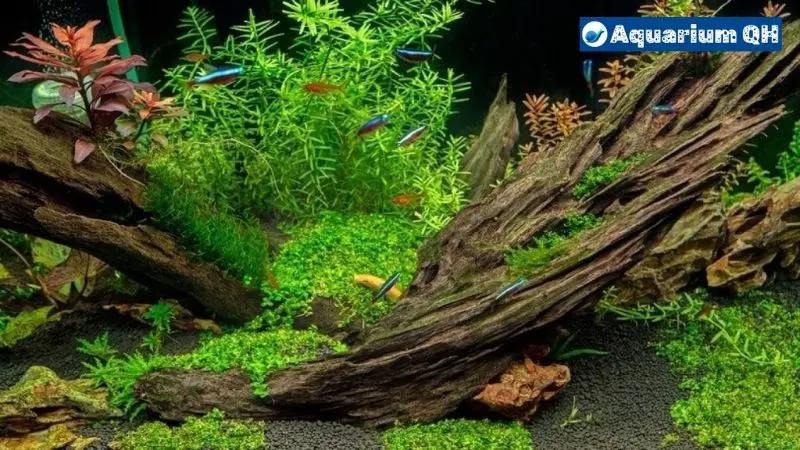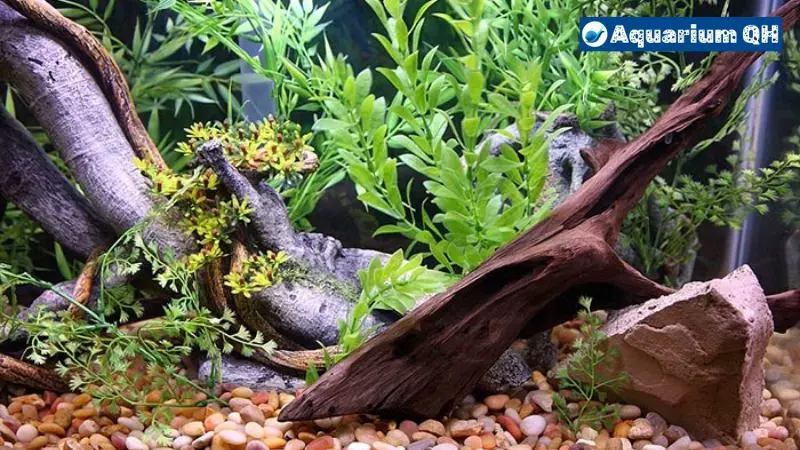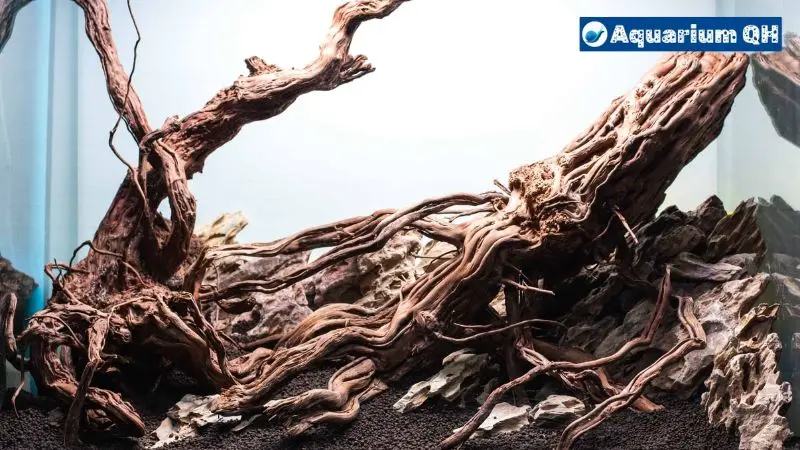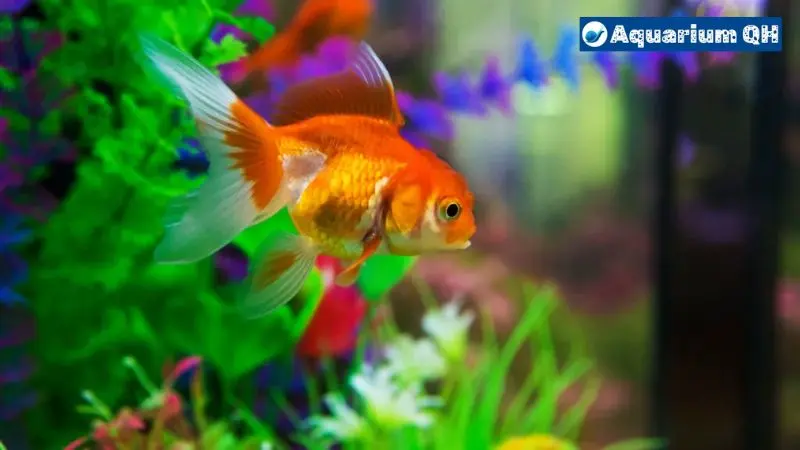Driftwood, with its weathered charm and natural allure, has become a popular choice for decor enthusiasts and environmentalists alike.
However, one question often lingers in the minds of those seeking to incorporate this rustic element into their homes or projects: how long does driftwood take to sink in fish tank?. Let’s explore with Aquarium QH
Factors Affecting Driftwood Sinking

Density of Driftwood
The sinking time of driftwood largely depends on its density. Dense pieces tend to sink more quickly, whereas lighter, porous ones may take longer to submerge.
Water Conditions
The environment in which the driftwood is placed plays a crucial role. Factors such as water temperature, salinity, and movement can affect the buoyancy of the wood, influencing its sinking time.
Natural Weathering Process

Exposure to Elements
Over time, exposure to the elements, including sun, wind, and water, gradually breaks down the outer layers of driftwood, increasing its density and aiding in quicker sinking.
Biological Activity
Biological organisms such as algae, barnacles, and marine worms colonize driftwood, contributing to its weight and accelerating the sinking process through natural decay.
Artificial Acceleration Methods
Boiling Driftwood
Some enthusiasts opt to accelerate the sinking of driftwood by boiling it in water. This process not only removes any salt or debris but also increases the wood’s density, causing it to sink faster.
Soaking in Water
Another method involves soaking the driftwood in freshwater for an extended period. This allows the wood to absorb moisture, becoming heavier and hastening its descent to the ocean floor or aquarium substrate.
Environmental Impact of Driftwood

Marine Life Habitats
Driftwood serves as vital habitat and refuge for various marine organisms, including small fish, crustaceans, and even nesting birds, highlighting its ecological importance beyond mere aesthetics.
Erosion Prevention
Along coastlines, strategically placed driftwood can help mitigate erosion by dissipating wave energy and trapping sediment, thus protecting fragile shorelines and preserving coastal ecosystems.
Common Misconceptions
Immediate Sinking Expectations
Contrary to popular belief, not all driftwood sinks immediately upon contact with water. Some pieces may remain buoyant for weeks or even months before eventually descending.
Permanence of Floating
While driftwood may float initially, its buoyancy is not permanent. Over time, natural processes and environmental factors will cause the wood to gradually sink to the seabed or settle in aquatic environments.
Choosing Driftwood for Decor
Consideration of Size
When selecting driftwood for decorative purposes, consider the size and weight of the piece, opting for denser specimens if a quicker sinking time is desired.
Inspection for Rot
Inspect the driftwood for signs of rot or decay, as compromised pieces may not only sink more slowly but also pose a risk to aquatic environments if introduced.
DIY Projects with Driftwood
Crafting Decorative Items
Get creative with driftwood by incorporating it into DIY projects such as wall art, sculptures, or functional furniture pieces, adding a touch of coastal charm to any space.
Creating Functional Pieces
Utilize driftwood in practical applications such as candle holders, coat racks, or shelving units, marrying form with function while embracing its natural beauty.
Safety Measures
Handling Precautions
Exercise caution when handling driftwood, as sharp edges or protrusions may pose a risk of injury. Wear gloves and protective gear as needed, especially when working with larger pieces.
Environmental Awareness
Be mindful of the environmental impact of harvesting or collecting driftwood. Obtain permits if necessary, and avoid removing wood from protected areas or habitats of endangered species.
Preservation Techniques
Sealing Driftwood
To prolong the lifespan of driftwood and maintain its natural appearance, consider sealing it with a marine-grade varnish or preservative to protect against decay and moisture.
Storing Properly
Store driftwood in a dry, well-ventilated area when not in use, away from direct sunlight and moisture, to prevent deterioration and maintain its integrity for future projects.
Historical Significance
Cultural Uses of Driftwood
Throughout history, driftwood has held cultural significance for coastal communities worldwide, used in traditional crafts, ceremonies, and storytelling, reflecting its enduring legacy.
Symbolism in Art
In art and literature, driftwood often symbolizes resilience, adaptability, and the passage of time, serving as a metaphor for the human experience and our connection to nature.
Scientific Research
Studies on Driftwood Behavior
Scientists continue to study the behavior of driftwood in aquatic environments, investigating its role in nutrient cycling, habitat formation, and the dispersal of marine species.
Monitoring Environmental Impact
Research efforts also focus on monitoring the environmental impact of driftwood accumulation and distribution, particularly in coastal regions prone to erosion and habitat loss.
Global Driftwood Market
Economic Value
The global driftwood market encompasses a wide range of industries, from decor and landscaping to aquascaping and furniture design, generating economic opportunities for artisans and entrepreneurs worldwide.
Sustainability Concerns
However, concerns about sustainability and responsible sourcing loom large, prompting efforts to promote ethical harvesting practices and support conservation initiatives to protect natural habitats.
Community Engagement
Beach Clean-Up Initiatives
Join beach clean-up efforts to remove debris, including driftwood, from coastal areas, helping to preserve marine ecosystems and maintain the beauty of our shorelines for future generations.
Educational Programs
Support educational programs and initiatives that raise awareness about the ecological importance of driftwood and promote conservation efforts to safeguard coastal environments.
Conclusion
In conclusion, the sinking time of driftwood is influenced by a variety of factors, including density, water conditions, and natural weathering processes. Whether for decor or environmental conservation, understanding these dynamics can enhance our appreciation for this humble yet versatile material and inspire us to embrace its beauty responsibly.
FAQs
- Does all driftwood sink eventually?
- While most driftwood will eventually sink due to natural decay and environmental factors, some lightweight or buoyant pieces may remain afloat for extended periods.
- Can I use driftwood from any source for decor?
- It’s important to ensure that the driftwood you use for decor is ethically sourced and legally obtained, avoiding pieces collected from protected areas or habitats of endangered species.
- How can I accelerate the sinking of driftwood for aquariums?
- Boiling or soaking driftwood in freshwater can help accelerate the sinking process, but be sure to rinse thoroughly and monitor water parameters to ensure compatibility with aquarium inhabitants.
- Is driftwood removal legal?
- Regulations regarding the removal of driftwood vary by location, so it’s essential to familiarize yourself with local laws and obtain any necessary permits before harvesting or collecting driftwood.
- What should I do if I find driftwood on the beach?
- If you come across driftwood during a beach stroll, consider leaving it in place to contribute to coastal ecosystems. However, if you notice significant debris or pollution, report it to local authorities or participate in beach clean-up efforts.




